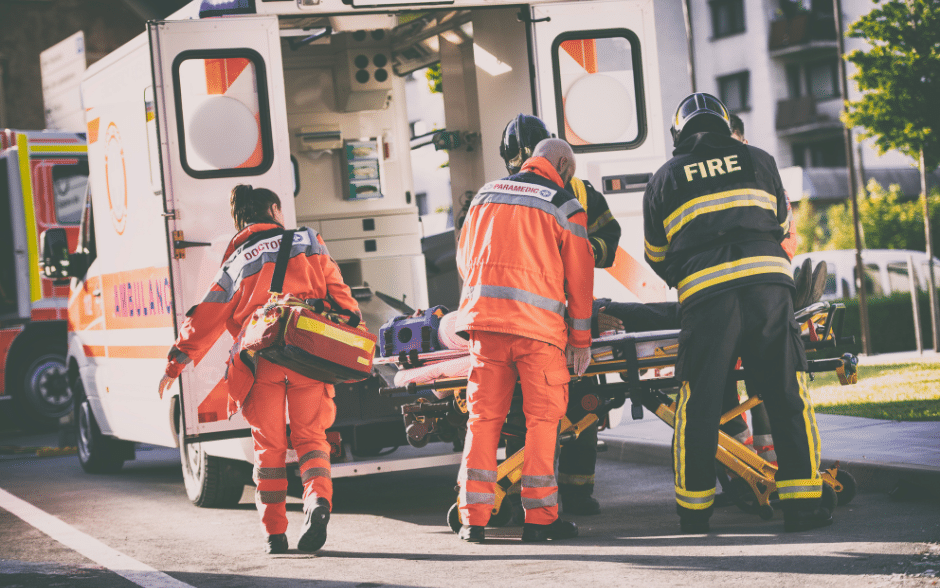First responders play a crucial role in safeguarding our communities, often facing high-stress situations that can take a toll on their mental and physical well-being. Wearable technology has provided great value in various industries for tracking health metrics, such as heart rate, sleep patterns, and physical activity. Its potential in supporting first responders is undeniable in terms of helping to enhance safety and performance, including the benefits of tracking fatigue, sleep, and recovery.
One metric that has received considerable attention in the context of first responders is heart rate variability (HRV).
What is heart rate variability (HRV)
HRV, the variation in time intervals between consecutive heartbeats. It is a measure of the balance between the sympathetic (fight or flight) and parasympathetic (rest and digest) branches of the autonomic nervous system and has proven to be a reliable indicator of an individual’s stress levels, emotional well-being, and overall health.
Utilizing wearables, such as the Biostrap devices, equipped with HRV monitoring capabilities can provide real-time data, helping first responders understand their physiological responses during high-stress situations.
Wearable Technology for Measuring HRV
Wearable technology, such as the Biostrap Kairos, EVO, and Ethos can continuously measure HRV throughout the day and night. These devices use either ECG or photoplethysmography (PPG) technology. The latter to measure the changes in blood volume in the microvascular bed of tissue, providing a non-invasive method for HRV assessment.
Advantages of Wearable HRV Monitoring
Measuring HRV offers several advantages for first responders:
- Continuous, real-time monitoring provides a comprehensive picture of an individual’s HRV throughout the day, allowing for more accurate assessments of stress and fatigue levels.
- Non-invasive and unobtrusive technology enables first responders to wear the devices during their daily activities and while asleep without hindrance.
- Data collected from wearable devices can be easily accessed and analyzed, allowing for personalized recommendations and interventions.
Why HRV Matters for First Responders
By monitoring HRV, first responders can gain insights into their autonomic nervous system’s functioning, enabling them to identify early signs of stress and take appropriate action. This information empowers them to implement self-regulation techniques, such as deep breathing exercises and mindfulness, to manage stress and maintain their performance under pressure.
The impact fatigue
Fatigue is a significant challenge first responders face. Numerous studies have established a link between the demanding nature of their work and increased risk of this condition. Literally has shown that over 50 percent of firefighter deaths are due to stress and exhaustion.
Additionally, studies have established that chronic fatigue might reduce HRV. By harnessing the power of wearable technology, we can gather valuable insights into their physiological responses, enabling proactive measures to mitigate the risk and impact fatigue.
Sleep tracking
Fatigue resulting from inadequate sleep is a significant concern for first responders, as it can impair cognitive abilities, decision-making, and reaction times, jeopardizing both their safety and the safety of those they serve. Wearable technology with sleep tracking capabilities allows first responders to monitor their sleep patterns and ensure they are getting the rest they need.
Sleep tracking can provide valuable data on sleep quality, duration, and disruptions, helping first responders identify potential sleep disorders or patterns that may impact their performance
Armed with this knowledge, they can implement strategies to improve sleep hygiene, such as maintaining a consistent sleep schedule, creating a conducive sleep environment, and adopting relaxation techniques before bedtime. These measures can significantly enhance their alertness and cognitive functioning, reducing the risk of fatigue-related challenges on duty.
Optimizing performance and safety
By leveraging HRV and sleep tracking, Biostrap enables first responders to take proactive steps toward optimizing their performance and safety. Continuous monitoring of HRV can aid in identifying patterns that may indicate the need for extended rest or recovery periods, preventing burnout and promoting overall well-being. Additionally, sleep tracking empowers first responders to prioritize and improve their sleep, ensuring they are well-rested and mentally sharp during critical moments.
Furthermore, the data collected through wearable technology can be analyzed on a broader scale to identify trends across teams. This information can be used to develop evidence-based protocols and training programs aimed at promoting resilience, reducing stress-related incidents, and improving overall performance.
More research needed but we’re at a good start
More research is needed to better understand the relationship between HRV and job-specific stressors faced by first responders, as well as to develop targeted interventions and strategies based on HRV data.
However, wearable technology, like the Biostrap devices, that are equipped with HRV and sleep tracking capabilities hold tremendous potential in supporting our first responders. By providing valuable insights into their physiological responses, these devices offer an opportunity to manage stress, reduce the risk of fatigue, and optimize performance and safety.
As we continue to explore innovative solutions, it is essential to prioritize the well-being of our first responders and equip them with the tools they need to excel in their noble service to society.




